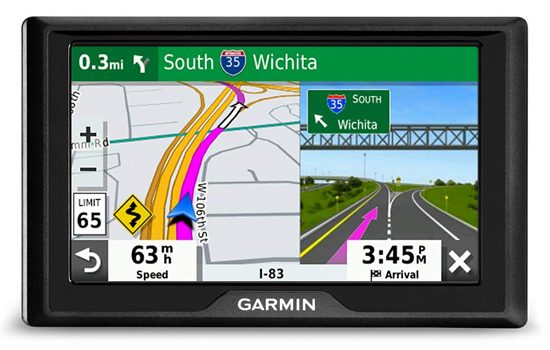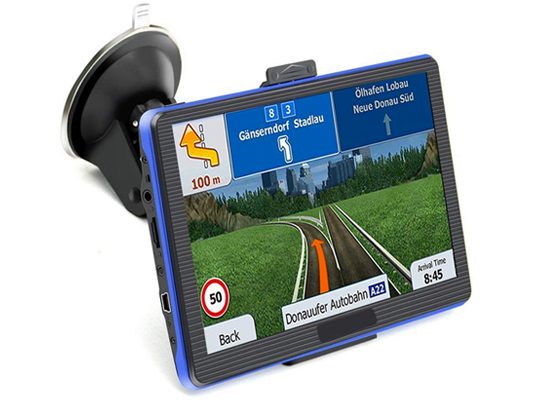
The Best GPS For Your Next Road Trip: Which One is Right For You?
It's often said that when you lose your way, you find yourself. But please don't take that literally. Nothing ruins a great road trip faster than getting lost without cell service and having no idea where you're going (or where the next gas station might be). Eek! If you’re planning a road trip and want to ensure things run, and drive, smoothly, invest in a standalone GPS. These functional devices help you get seamlessly from point A to point B anywhere on the planet, and many come with useful extra features, such as voice command and TripAdvisor partnerships, that make them safer, easier, and more fun to use than smartphone apps. Read on to find the GPS that’s best for you, and never get lost again.
Frequently Asked GPS Questions

1. What is the most accurate GPS device?
GPS devices designed for cars, particularly those from market leaders such as Garmin and TomTom, offer similar accuracy. After all, they run on the same technology. GPS navigation devices connect to the Global Positioning System (GPS), a network of satellites run by the United States Department of Defense. Some devices also work in tandem with Russia’s Global Navigation Satellite System, GLONASS, for increased accuracy (though you may have to enable this feature first).
2. What are some important features to look for when choosing a GPS?
Although many of the newer GPS models are equipped with useful features (such as alternative routing and traffic information), there are a few additional features to keep in mind. Screen size is a major one. The bigger the screen, the easier it will be to read your GPS (just note that in most cases the bigger the screen, the pricier the device). If you plan on stopping at multiple destinations on the road, you’re best off getting a system with voice commands so you don’t have to pull over and manually type in destinations. If you use your phone a lot, look for a model that you can pair with your smartphone; some will even read text messages to you—how cool is that?
3. Why is buying a standalone GPS better than using a smartphone app?
There are a ton of reasons why a standalone GPS is a better choice than using an app on your smartphone. First of all, a GPS is larger and easier to see, making it safer to use without taking your eyes off the road for too long. Smartphone map apps drain data (and your phone’s battery) fast, which can get expensive if you’re traveling long distances. Dedicated devices rely on GPS satellites, so they’ll also work whether you have data or not. Finally, many GPS models are compatible with backup cameras, saving the need to install two different devices in your car. That’s an excellent bang for your driving buck.
Our GPS Picks
Best Overall GPS: Garmin DriveSmart 65 & Traffic

One of Garmin’s newer GPS systems, the DriveSmart 65 features a 6.95-inch edge-to-edge display and is compatible with Garmin’s BC 40 backup camera, making it a good choice if you want to add a backup camera. You can pair the DriveSmart with your smartphone so that texts and notifications will display right on your screen. If you download the Garmin Drive app, you’ll see traffic cameras and even search for available parking. However, this device’s biggest perk is its voice-activated navigation, designed so you can communicate to your device without taking your eyes off the road. If you like talking to Suri on your smartphone, you’ll love chatting with your Garmin in the car.
Best GPS on Amazon: Garmin Drive 52 & Traffic

This compact Garmin model strikes the balance between features and affordability. It’s basically a scaled-down version of the DriveSmart 65, with many of the same perks as our top pick (above), but at a considerably lower price point. Its five-inch screen makes it easy to pack, and is still big enough to see it clearly. While it doesn’t have voice-activated navigation or phone pairing capabilities, you can pair it with a backup camera. As an added bonus, Garmin has partnerships with TripAdvisor and the History Network, giving you easy access to on-the-go hotel reviews and fun details about attractions you might be driving past. This will definitely come in handy for any head-turning roadside oddities, like the world’s biggest beagle.
Best Budget-Friendly GPS: Prymax 7 Inch GPS Navigation for Car

If you have the tendency to eschew big brand names in favor of lower-cost generics, consider this budget-friendly device by Prymax. It features a seven-inch touchscreen with daytime and nighttime modes and clear resolution. It also doubles as a tracking device. Friends and family need to simply log on to a website to see where you are, something to keep in mind for the nervous parents of teen drivers. The battery life isn’t quite as good as some higher-priced alternatives, but remembering to charge it up or keep it plugged in is definitely worth the savings. Use that money to fill up your gas tank and take another epic road trip.
Best Luxe GPS: TomTom Go 620

TomTom’s top-of-the-line model, the Go 620, is one of the pricier car satellite navigations systems out there, but it packs in plenty of perks. It’s compatible with smartphones and has a built-in microphone, so you can use it for hands-free calling or for accessing Siri and Google Now. It will even read your text messages to you while you’re driving. It also has built-in Wi-Fi so that you can update maps and software by connecting directly to Wi-Fi. The device is also available with a five-inch screen, as the Go 520, at a slightly cheaper price. If you drive a luxury car, you naturally need a luxury GPS to match.
Best Hybrid GPS: ATOTO A6 Double Din Android Car Navigation Stereo with Dual Bluetooth

This in-dash hybrid stereo system features an Android operating system and a huge number of features—it’s basically like having a tablet in your dashboard. Unlike some of the Garmin models, which require you to buy one of their backup cameras, the ATOTO A6 can be paired with a variety of cameras and you can set it up to interface with the stereo control buttons on your steering wheel. The ATOTO A6 also boots up in about two seconds, so you’ll have near-immediate access to your GPS as soon as you turn on the car. Note that this GPS option uses apps, which means you can use Google Maps or any other app that you’re comfortable with (though this can compromise accuracy). Consider this a two-for-one GPS.
Related Stories
- What to Pack to Make Your Kids Happy (And Quiet) in the Backseat And Beyond
- How to Pack for a Summer Road trip
All products have been hand-picked by our writers and editors. Items purchased through links may earn us a commission.




